Contents
- Star Trek Quick Stats
- Star Trek Profile Summary
- Star Trek Timeline
- Images by Star Trek Lovers
- Videos created by Star Trek Brand Lovers
- Presentations about Star Trek as a Brand
- Articles related to Star Trek
- Web site(s) related to Star Trek
- Star Trek Facebook Fan Page
| Certified Cult Brand | ||||
 | We have tracked businesses with unprecedented brand loyalty since 2001. A Certified Cult Brand is a designation we hold for brands that fulfill specific market criteria, including upholding the Seven Rules of Cult Brands. | |||
Star Trek Quick Stats
Created in 1964 by Gene Roddenberry
Star Trek focused on a deeper, more intellectual bent, using many of its stories as futuristic parables for modern-day issues (such as racism and war). It was also unique for having an ethnically diverse cast that included black, Japanese, Russian and Vulcan crewmembers
A historical first was the first interracial TV kiss (between Kirk and Uhura) that aired on Star Trek.
Deluged by letters from fans, NASA names the first space shuttle “Enterprise”.
The Next Generation character Lieutenant Geordi La Forge, played by LeVar Burton, was named after a Trekkie. George La Forge was a devoted attendee of numerous Trek conventions who had muscular dystrophy. He had allegedly built a friendship with Gene Roddenberry over the years, and as a salute of sorts, Roddenberry named a character after him.
When Star Trek creator Gene Roddenberry died, some of his ashes were brought up on the space shuttle and launched into space as a tribute.
Star Trek Cult Brand Summary
Star Trek creator Gene Roddenberry couldn’t have been further away from fitting the mold of the typical Hollywood director. He wasn’t born into a Hollywood family, and he didn’t have any connections in the film industry. He was just an ordinary guy with a dream to make it big in Hollywood.
After moving to Los Angeles to pursue writing full time, the first job Roddenberry nabbed was in the public relations department of the Los Angeles Police Department. Building on his job, he worked his way into becoming a consultant for police TV shows, but he hadn’t hit the big time with his own show. In 1960, he began pitching the idea of Star Trek to the major studios. As wacky as it sounds today, it took Roddenberry six years of hustling and pitching before NBC finally bit on Star Trek. Even then, Roddenberry’s real challenges were only beginning. The original Star Trek pulled only mediocre ratings and lasted only three short seasons before NBC cancelled it in 1969.
In fact, the show barely made it into a third season. In 1967, when the cancellation after a second season seemed highly likely, word quickly spread among sci-fi fans that Star Trek was being cancelled. That’s when the husband and wife team of Bjo and John Trimble entered the picture. The two buffs quickly reacted to the news by developing a “Save Star Trek” letter-writing campaign. Gene Roddenberry got down in the trenches with the Trimbles and helped drum up support. The result of their tireless efforts was that NBC received a barrage of letters from fans begging the network to bring the show back. NBC agreed and Trekkers got to see a third season of their beloved series.
Despite cancellation after the third season, Roddenberry refused to shelve his dreams, and hit the sci-fi lecture circuit hard, evangelizing to all who would listen about Star Trek, which by then was starting to run in TV syndication–a run that would have been nearly impossible if not for the third season produced by the letter-writing campaign. At the same time, he constantly pitched studios on doing a Star Trek motion picture. Amazingly, Roddenberry kept up his pace for an entire decade until 1979 when, after seeing the surprise success of a little movie called Star Wars, Paramount Studios finally gave him the green light to direct Star Trek: The Motion Picture. Not only was this first film a big hit monetarily, but it also validated Roddenberry’s original vision, ensuring that Star Trek would be around for many years to come.
While Paramount has been criticized in recent times for not giving enough back to its fans, the reality is that the movie studio helped stimulate the creation of customer communities as long ago as the release of the original film. The year was 1979 when a rabid eighteen-year-old Star Trek fan Dan Madsen began publishing and distributing a small photocopied newsletter for fellow Trekkers. Although Paramount initially approached him and accused him of copyright violations, soon thereafter, Paramount executives looked more closely at the content of Madsen’s newsletters and saw he was really doing them a favor and quickly brought him on board. It allowed Paramount to inexpensively keep interest in its fans around the world and get the benefit of the club’s evangelizing without having to roll up its sleeves and start preaching on its own.
Nine motion pictures, five television series, dozens of books, and endless amounts of merchandise later, Star Trek has grossed hundreds of millions of dollars for Paramount. None of this would ever have come to fruition if it had not been for Roddenberry pleading for support from his fans, and the Trek nation’s wholehearted response. When Roddenberry passed away in 1991, he died knowing that his crazy idea had evolved into an important and lasting mainstay of American pop culture.
Star Trek Timeline
Provided by:
http://www.mutantreviewers.com/rtimetrek.html and
http://en.wikipedia.org/wiki/Timeline_of_Star_Trek
1964 – Gene Roddenberry begins work on a utopian science fiction show that he summarizes as “Wagon Train to the stars”. A pilot for this new show called “Star Trek” was ordered by NBC and filmed. The episode was called “The Cage”, and starred Jeffrey Hunter as Captain Pike of the U.S.S. Enterprise, a starship sent out to explore “strange new worlds”. NBC rejected the pilot as being too cerebral. Only the ship and the character of Spock would actually return for the show; however this pilot was turned into a two-part episode of Star Trek later down the road.
1966 – “Space…The Final Frontier. These are the voyages of the starship Enterprise. Its five-year mission: to explore strange new worlds, to seek out new life and new civilizations, to boldly go where no man has gone before!”
A second pilot is made, which NBC approves of and the show is a Go for launch. Star Trek(abbreviated as TOS for “The Original Series”) airs for the first time on September 8. William Shatner stars as Captain Kirk, joined by Leonard Nimoy (Spock), DeForest Kelley (McCoy), James Doohan (Scotty), Nichelle Nichols (Uhura), George Takei (Sulu) and Walter Keonig (Checkov). While it had action, Star Trek focused on a deeper, more intellectual bent, using many of its stories as futuristic parables for modern-day issues (such as racism and war). It was also unique for having an ethnically diverse cast that included black, Japanese, Russian and Vulcan crewmembers (separate people – not combined into one strange hybrid). Due to poor timeslot and an audience that wasn’t perhaps ready for this different type of science fiction show, Star Trek flounders in the ratings.
1968 – As second season ratings plummet, NBC mulls pulling the plug. However, the small but growing Star Trek fan base starts a letter writing campaign that floods the offices of NBC and convinces them to renew Trek for a third season. This made for television history, of a sort, and would be a reoccurring tactic for Star Trek fans in shows to come.
Another historical first was the first interracial TV kiss (between Kirk and Uhura) that aired this year.
1969 – The last year of the Flower Child era saw Star Trek’s cancellation after a truncated three seasons and 79 episodes. A second letter writing campaign did not change NBC’s mind. However, in the early 1970’s, Star Trek would be broadcast in syndication. This concept, while standard for us now, was a new idea back then, and repeats of the show fertilized and grew an enormous fan base of Star Trek fans – who called themselves “Trekkies”. The networks start to rethink their decision.
1973 – Star Trek: The Animated Series (TAS) is created and airs as a 30-minute cartoon on NBC. This show, which still fluctuates between “official” and “unofficial” Star Trek canon (Paramount considers it non-canon, even though things from TAS are referenced numerous times in the other series), continued the show from where it left off, with the Enterprise in the fourth of its five-year mission. James Doohan, Nichelle Nichols and Majel Barrett returned to supply most of the voices for the show, which won an Emmy in ’73.
1974 – Barely into its second season, Star Trek: The Animated Series is cancelled with 22 episodes under its belt.
1976 – Deluged by letters from fans, NASA names the first space shuttle “Enterprise”.
1979 – With the enormous cult fan base clamoring for more Trek, Paramount (the keepers of the Star Trek leash) knew they had a potential for success on their hands, but debated what to do next. Much ado was given to a second TOS show called Star Trek: Phase Two, which would continue the adventures of Kirk and Enterprise with a few new crew members. Production actually began on the show and 12 episodes were written before the order was given to instead transform it into a movie. Thus, Star Trek: The Motion Picture was rushed at great expense (and somewhat unfinished) into theaters to a decent box office gross but an underwhelming reaction by both critics and fans to the movie itself (particularly in the wake of the enormously popular and faster-tempo Star Wars).
1982 – Teased with the prospect of what money a really good Star Trek movie could bring in, Paramount shifted direction and authorized a second ST film to do things right. Nicholas Meyer, who would prove to be a major asset to the film series, was brought in to direct; an old villain from TOS (Khan) was revived as Kirk’s foe; and the movie would feature a lot more action and adventure than The Motion Picture. Star Trek II: The Wrath of Khan exploded into theaters and became one of the most beloved and successful Star Trek movies of all time (the debate goes on between fans about which is better: 2, 4 or 6?). Star Trek II updated the look of the ship and uniforms to a new era which would serve the next five movies, and had a stunning conclusion with the death of Spock.
1984 – The second film in a Star Trek movie arc, Star Trek III: The Search For Spock isn’t well-received but isn’t universally hated, either. Leonard Nimoy said he’d only come back as Spock if they gave him directorial reigns, which they did. Star Trek III witnessed the destruction of the NCC-1701 Enterprise.
1986 – Leonard Nimoy returns to direct Star Trek IV: The Voyage Home, which turns out to be the biggest success of the series with mainstream audiences. While some Trekkies complain about the modern-day setting and more family-appealing tactics, this film has a great effect on the franchise, mainly in prepping everyone to see the new television series on the horizon.
1987 – With the success of the feature films prompting Paramount into finally reviving Star Trek as a television series, the decision was made to create a show set some time after TOS and with a completely new cast. News of this show, labeled Star Trek: The Next Generation (TNG), would deeply divide Trekkies – some welcomed a new show, at last, and some considered it to be a blight on the original crew.
In any case, 21 years to the month after TOS first aired, The Next Generation debuted on television. This hour-long show focused around the sixth Enterprise – the Enterprise-D – and its crew of Captain Picard (Patrick Stewart), Riker (Jonathan Frakes), Data (Brent Spiner), LaForge (LeVar Burton), Worf (Michael Dorn), Dr. Crusher (Gates McFadden) and Troi (Marina Sirtis). Like TOS, it featured a diverse crew (aliens and androids thrown into the mix), and a unique starship that carried families and could separate in two (although it only did this a couple times). While the first year was shakey, by the end of the third season The Next Generation was firmly entrenched as a fan favorite and a stellar show.
1989 – Egos running amok, William Shatner demands that he be allowed to write and direct his own Star Trek film or else refuse to star in it. Thus, the travesty known as Star Trek V: The Final Frontier was given birth, and quickly became a laughing stock for the Star Trek universe. Parts of it, including Spock’s half-brother, are not considered official Star Trek canon (despite being in an official Star Trek film).
1991 – Star Trek’s 25th anniversary. Star Trek creator Gene Roddenberry dies, reportedly only a couple days after previewing the sixth Trek motion picture. Some of his ashes are brought up on the space shuttle and launched into space as a tribute.
Star Trek VI: The Undiscovered Country sends the original Star Trek crew off on a particularly high note (this was also helmed by Star Trek II’s Nicholas Meyer). It is the last time that the entire original cast is in the same movie or show together.
1993 – As Paramount knew that The Next Generation was coming to an end, a new Star Trek show was commissioned to pass the torch on to. Star Trek: Deep Space Nine (DS9) premieres, and takes the franchise in a vastly different direction. The first Star Trek show not set on a starship or the Enterprise, DS9 instead focused the action around a recaptured enemy space station guarding a wormhole to a different part of the galaxy. Again, there was a diverse cast that included characters from all walks of life (not just Starfleet-only this time). Commander Sisko (Avery Brooks) was joined by a shapeshifting alien, a parasitic alien and its host, and two cross-over characters from TNG: Chief O’Brien (Colm Meaney) and Worf (in season four).
Deep Space Nine became the dark horse of the Star Trek franchise. It didn’t quite get the ratings that TNG attained, but it developed an incredibly strong fan base that loved its darker themes and less goody-two-shoes approach to the ST universe. One of their most unique shows had DS9’s crew going back to Captain Kirk’s time and spliced the modern-day characters in with the action from “The Trouble With Tribbles”.
DS9 not only faced competition from two other Star Trek shows (TNG and Voyager) but also the similarly-themed Babylon 5, also set on a space station. It was the first show made without any direct input from Gene Roddenberry.
1994 – After its seventh season, The Next Generation goes off the air with its 178th episode and becomes the longest-running Star Trek series.
Bridging TOS with TNG, Star Trek Generations (aka Star Trek 7) is released in theaters. While its two-show span is ballyhooed by fans and the press, the movie is a bit of a stinker and flops. Captain Kirk is killed, along with the Enterprise-D.
1995 – Milking it for all it’s worth – this was the common thought of everyone, Trekkie and average Joe alike, as they heard that Paramount was rolling out yet another Star Trek series on the heels of TNG and running concurrent with DS9. Star Trek: Voyager would return to the bridge of a Starfleet vessel, with a couple twists: the captain would be a woman (Kate Mulgrew), the crew mixed between rebel and Starfleet personnel (and a holographic doctor!), and the ship accidentally shot into another part of the galaxy and would be seeking a way home.
Voyager was far from a fan favorite. Trekkies complained that they were beginning to see the same plots recycled from earlier shows, that the characters weren’t strong or interesting enough, and that the producers were specifically trying to bring the level of the show down to reach more teenagers – mostly with the inclusion of shapely cyborg Seven of Nine (Jeri Ryan) in season four. Star Trek taskmasters Brannon Braga and Rick Berman were specifically called to blame, as they controlled the franchise with an iron fist which allowed for little innovation or fresh writing.
1996 – This is it: the final peak for the Star Trek franchise to date. As DS9 and Voyager bloom across television sets, the best Next Generation film is released: Star Trek: First Contact. The inclusion of the Borg, the introduction of the Enterprise-E, and a more action-oriented script make this a fan favorite. First Contact also sets up events leading into the upcoming Enterprise series.
1997 – A documentary about Star Trek fans (Trekkies) indicates how enormous the Trek phenomena has spread.
1998 – Star Trek: Insurrection gets so-so reviews and is quickly forgotten.
1999 – Quietly, Star Trek: Deep Space Nine was let go after an incredible seven seasons and 176 episodes. DeForest “McCoy” Kelley dies.
2001 – Star Trek: Voyager is cancelled. Like both TNG and DS9, it made it to its seventh season (compiling 172 episodes).
As the past decade and a half saw three Star Trek shows mine The Next Generation universe for ideas and episodes, the producers decided on a new series that would go back in time, rather than forward. Enterprise (later to be renamedStar Trek: Enterprise) chronicled the adventures of the first ship to bear that name and set well before the time of Captain Kirk. Taking place some time after the events of Star Trek: First Contact, the show explores the first crew of a warp five Starfleet vessel and its (of course) diverse crew.
The announcement of this show stirred excitement in the fans not seen in a long time, for many reasons. First, the original setting offered a semi-clean break from the ponderous universe that the other Star Trek shows had been growing on. Second, it would star Scott Bakula, already a scifi cult star of the show Quantum Leap. Third, the technology would be “aged back” to a more primitive time where transporters weren’t trusted and the ship would share more in common with a submarine than a pristine spaceship. Fourth, the pre-Federation universe promised to be more dangerous and exciting.
Enterprise shot itself in the foot many times over – with a horrible pop theme song, Scott Bakula’s caveman-like acting, continuity errors abounded that conflicted with the “future” shows, and generally horrible scripts that didn’t deviate from the Star Trek formula that was promised. Tactics were tried: the Vulcan officer was made to wear sexy form-fitting catsuits, season three featured a season-long storyline about an impending doom for Earth, and special effects were ramped up. It didn’t help. Viewers drifted away from this show rapidly, and only an intense fan campaign helped to renew the show for a third and fourth season.
2002 – The tenth Star Trek movie promised to be one of the best ever – and it failed. Star Trek Nemesis comes out, rehashes the plot to Star Trek II, and pretty much kills the movie series for the time being. It also killed Data. Nemesis has the lowest box office gross of any Star Trek film to date ($100 million to make, $40 million box office).
2005 – Faced with the box office failure of Star Trek: Nemesis and the incredibly low ratings for Star Trek: Enterprise, the show was axed. The finale for the show would be steeped in some of the most bitter acts of Star Trek history. Enterprise becomes the first Star Trek show since TOS and TAS to be cancelled before its seventh season (amassing 98 episodes).
2009 – A new film Star Trek is released. The story takes place in an alternate reality due to time travel by both Nero and the original Spock (Leonard Nimoy). The alternate timeline was created in an effort to free the film and the franchise from established continuity constraints.
A surprise public screening was held on April 6, 2009, at the Alamo Drafthouse theater in Austin, Texas, hosted by writers Robert Orci, Alex Kurtzman, and producer Damon Lindelof. The showing was publicized as a screening of Star Trek II: The Wrath of Khan, followed by a ten-minute preview of the new Star Trek film. A few minutes into Khan, the film appeared to melt and Leonard Nimoy appeared on stage with Orci, Kurtzman and Lindelof, asking the audience, “wouldn’t you rather see the new movie?”
The film was requested by astronaut Michael R. Barratt, before boarding the International Space Station. Paramount provided NASA with a copy that was uploaded to the International Space Station on May 14, 2009.
Images of Star Trek Brand Lovers
 |
 |
 |
 |
 |
 |
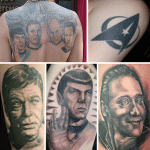 |
 |
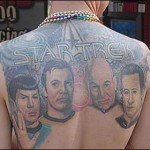 |
 |
 |
 |
 |
 |
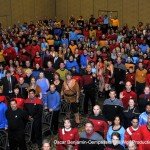 |
 |
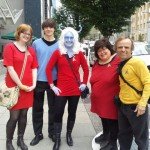 |
 |
 |
 |
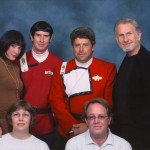 |
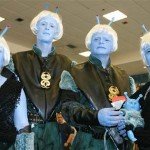 |
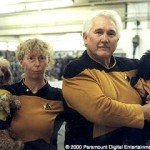 |
 |
 |
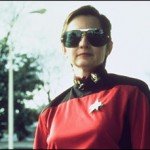 |
 |
 |
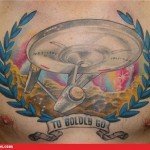 |
 |
 |
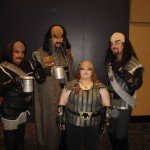 |
 |
Videos Created By Star Trek Brand Lovers
Presentations About Star Trek As a Brand
Articles related to Star Trek
After 40 Years, ‘Star Trek’ Still Going Strong
Star Trek 45th Anniversary Celebration: A Story For All Trekkies
Star Trek Inspires Woman to Become Astronaut
http://www.sfi.org/portal/index.php
http://www.startrek.com/fan_sites
Facebook Fan Page
https://www.facebook.com/StarTrek?ref=ts
Browse Cult Brands | ||||
 |  |  | 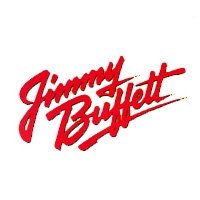 | 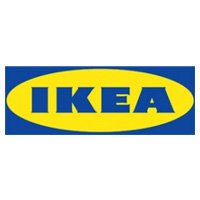 |
 |  | 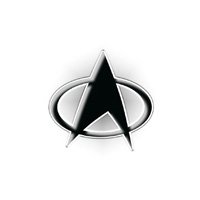 | 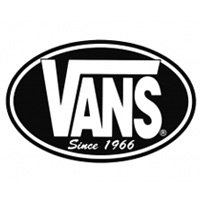 |  |
 | 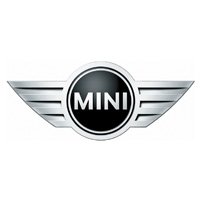 |  | ||

